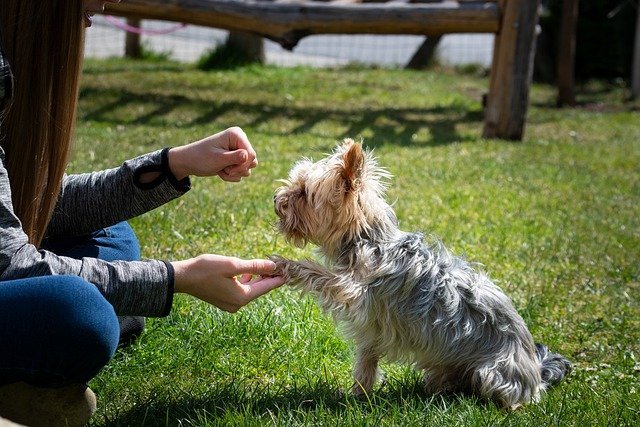Positive Reinforcement Training for Dogs
- by Pedro Padierna
-

What is Positive Reinforcement Training?
Positive reinforcement training is a method of encouraging desirable behaviours in animals such as dogs by using praise, treats, toys, and anything else that the animal finds rewarding. By doing this consistently and patiently, an owner can significantly alter dog behaviour.
What Can Be Used as a Reward for Positive Reinforcement?
Almost anything that your dog finds rewarding can be used to train them. This includes treats, toys, praise, or even playing games with sustainable dog accessories and toys.
Treats
Since dogs are highly motivated by food, treats make a great tool for positive reinforcement. Tasty treats that are irresistible to your dog are particularly good for encouraging good behaviour. You can experiment to see which treats your dog responds to the best.
If the treats seem to become less effective over time, it may be because the dog is getting too used to (or bored of) that particular treat. To prevent this from happening, keep a variety of yummy treats on hand at all times.
Toys
Toys can work equally as well as rewards for training your dog through positive reinforcement. Having a variety of toys will ensure that they don’t get bored of them too easily, and this means that they will be more motivated to be on their best behaviour.
Praise
Praise is best used as a positive reinforcement technique in conjunction with other techniques, such as feeding them treats or giving them a toy. A simple “good girl!”, “good boy!”, “yes!” or “well done!” in an enthusiastic, light-hearted tone will show the dog that their behaviour is encouraged.
Playing Games
Reward your dog for their good dog behaviour with a game with a ball, rope toy or stick!
When to Use Positive Reinforcement
In short, you should be using positive reinforcement techniques when you want to encourage more of the dog’s good behaviour. This could be before petting them to avoid them jumping up, before feeding to encourage good meal-time practises, or when they return to you when you call them to put them on their dog leash.
Be careful not to reward negative behaviour by accident; it’s easy to respond to barking or bad toileting behaviour with letting them out into the garden, but this is rewarding their negative behaviour.
The Positive Reinforcement Training Method: Top Tips
Consistency is Key
When training your dog using positive reinforcement, make sure you’re being consistent. This means using the same cues each time, establishing a routine, and only rewarding their good dog behaviour. When you begin the training, make sure everyone in the family uses the same instruction-words and knows which actions to reward, in order to prevent the dog getting confused.
Reward Timing
One of the most important features of training a dog via positive reinforcement is the timing of it. The reward must be issued within a few seconds of the dog doing the required action, otherwise the dog may associate the reward with the wrong action.
Short and Sweet Instructions
Keep the instructions short and sweet when training a dog. For example, use short keywords such as “sit!”, “down!”, “stay!”, “up!”, “come!”. Instructions should be issued calmly, in an enthusiastic voice. You should also avoid repeating the word too many times as this can cause confusion.
Nina Woof sells premium, sustainable dog accessories for more environmentally-friendly pet ownership. Check out our articles to learn more about becoming a more sustainable pet-owner.





